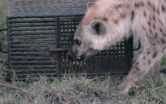(Press-News.org) Researchers have successfully tested a vaccine for the deadly Nipah virus in monkeys, raising hopes that it could provide similar protection for humans.
With greater than a 75 percent fatality rate and the ability to be transmitted directly from person to person, Nipah has long been a significant concern for infectious-disease experts. The virus, which is carried naturally by fruit bats, was first discovered in Malaysia in 1998. Outbreaks have occurred in nearly every year since, in Singapore, Bangladesh and India.
"This vaccine is based on a protein from Hendra virus, which is a very close relative of Nipah — Hendra's found in Australia and is also spread by bats, which give it to horses, which give it to people," said University of Texas Medical Branch at Galveston professor Thomas Geisbert, senior author of a paper on the study now online in Science Translational Medicine. "We've got a lot of confidence that the vaccine will work in people, because the animal model we used in this experiment, the African green monkey, faithfully reproduces all aspects of human Nipah and Hendra disease."
Because there is no approved vaccine or therapy for Nipah, the researchers conducted their study in a biosafety level 4 "spacesuit" facility at the National Institutes of Health's Rocky Mountain Laboratories in Hamilton, Mont. There, the scientists divided nine monkeys into three equal groups, administering a different vaccine dose to each group.
Forty-two days later, the researchers infected the animals with what should have been a lethal dose of Nipah. But all of the vaccinated monkeys — even those that had received the lowest dose of the vaccine — remained completely healthy.
"The vaccine worked great," Geisbert said.
The researchers plan further studies to prepare for a possible application for review by the Food and Drug Administration to license the vaccine for human use. In addition, the vaccine is now in commercial development in Australia to protect horses from Hendra virus.
###Other authors of the Science Translational Medicine paper include Katharine Bossart and Andrew Hickey of Boston University; Barry Rockx and Joan Geisbert of UTMB; Friederike Feldmann, Doug Brining, Dana Scott, Rachel LaCasse and Heinz Feldmann of Rocky Mountain Laboratories; and Yan-Ru Feng, Yee-Peng Chan and Christopher Broder of the Uniformed Services University of the Health Sciences. Support for this research was provided by the National Institute of Allergy and Infectious Diseases and the NIH.
Potential Nipah vaccine passes primate test
2012-08-09
ELSE PRESS RELEASES FROM THIS DATE:
University of Tennessee professor releases weight management product
2012-08-09
VIDEO:
How would you like to experience the effects of running three miles or staving off Type 2 diabetes without making drastic changes in your lifestyle? With nutrition supplements developed by...
Click here for more information.
How would you like to experience the effects of running three miles or staving off type two diabetes without making drastic changes in your lifestyle? With nutrition supplements developed by a professor at the University of Tennessee, Knoxville, ...
Source of conflict: Study finds factors that can shape divorced mothers' co-parenting experiences
2012-08-09
SALINA, KAN. -- The type of relationship a woman has with her ex-partner is a factor in how the couple shares custody of children, according to a Kansas State University expert on postdivorce and co-parenting relationships.
In a study of divorced or separated mothers sharing physical custody of their children with their former partners, Mindy Markham, assistant professor of family studies and human services on the university's Salina campus, identified three patterns of co-parenting -- continuously contentious, always amicable and bad to better -- as well as negative ...
Hormone acting drugs + uterine artery embolization offers nonsurgical treatment for uterine fibroids
2012-08-09
Women with uterine fibroids larger than 10 cm have a new nonsurgical treatment choice –hormone acting drugs followed by uterine artery embolization, a new study shows. The new treatment option can replace hysterectomy, which leaves women infertile.
The study, conducted at the Yonsei University College of Medicine in Seoul South Korea, included 40 women with 10 cm or larger uterine fibroids. Twelve of the women received gonadotropin-releasing hormone (GnRH) agonists to shrink their fibroids before undergoing uterine artery embolization, said Man Deuk Kim, MD, PhD, lead ...
The making and unmaking of stem-like, aggressive breast cancer cells
2012-08-09
Breast cancers that depend on the hormones estrogen and progesterone are susceptible to treatments targeting these hormones. Take away this dependence and you lose a valuable treatment option. A University of Colorado Cancer Center study published as a featured article in the journal Oncogene shows how progesterone does just this – by suppressing a key microRNA, progestins return breast cancer cells to a stem-cell-like state in which they haven't yet differentiated, and are thus more resistant to chemotherapies and more likely to carry a poor prognosis.
"The reason we ...
New 3-D map of massive galaxies, distant black holes offers clues to dark matter and energy
2012-08-09
The Sloan Digital Sky Survey III (SDSS-III) has released the largest-ever three-dimensional map of massive galaxies and distant black holes, helping astronomers better explain the mysterious "dark matter" and "dark energy" that make up 96 percent of the universe. According to SDSS-III scientific spokesperson and University of Pittsburgh assistant professor of physics and astronomy Michael Wood-Vasey, scientists using the map—titled Data Release 9 (DR9)— can retrace the Universe's history over the last seven billion years. Wood-Vasey cowrote the DR9 summary paper featured ...
Chronic exposure to staph bacteria may be risk factor for lupus, Mayo study finds
2012-08-09
ROCHESTER, Minn. -- Chronic exposure to even small amounts of staph bacteria could be a risk factor for the chronic inflammatory disease lupus, Mayo Clinic research shows. Staph, short for Staphylococcus aureus, is a germ commonly found on the skin or in the nose, sometimes causing infections. In the Mayo study, mice were exposed to low doses of a protein found in staph and developed a lupus-like disease, with kidney disease and autoantibodies like those found in the blood of lupus patients.
The findings are published online this month in The Journal of Immunology. ...
Astronomers release the largest ever 3-D map of the sky
2012-08-09
VIDEO:
This is an animated flight through the universe as seen by SDSS. There are close to 400,000 galaxies in the animation, which places zoomed-in images of nearby galaxies at the...
Click here for more information.
The Sloan Digital Sky Survey III (SDSS-III) has released the largest three-dimensional map of massive galaxies and distant black holes ever created. The new map pinpoints the locations and distances of over a million galaxies. It covers a total volume equivalent ...
Wiki where you work?
2012-08-09
Do corporate wikis work? Two University of Alberta researchers say they can, providing they fit the corporation's culture and provide for the needs and interests of their users and editors.
PhD candidate Lisa Yeo and Ofer Arazy, an assistant professor in the Alberta School of Business, say that using wikis as a form of corporate knowledge management can be beneficial. However, some concessions need to be made in terms of how wiki "knowledge" is posted to support people's needs for recognition with their company. If companies want their wiki to work, it cannot be held ...
Simple mathematical computations underlie brain circuits
2012-08-09
CAMBRIDGE, MA -- The brain has billions of neurons, arranged in complex circuits that allow us to perceive the world, control our movements and make decisions. Deciphering those circuits is critical to understanding how the brain works and what goes wrong in neurological disorders.
MIT neuroscientists have now taken a major step toward that goal. In a new paper appearing in the Aug. 9 issue of Nature, they report that two major classes of brain cells repress neural activity in specific mathematical ways: One type subtracts from overall activation, while the other divides ...
Hyenas that think outside the box solve problems faster
2012-08-09
EAST LANSING, Mich. — Innovative problem solving requires trying many different solutions. That's true for humans, and now Michigan State University researchers show that it's true for hyenas, too.
The study, published in the current issue of the Proceedings of the Royal Society B, presented steel puzzle boxes with raw meat inside to wild spotted hyenas in Kenya. To get the meat, the hyenas had to slide open a bolt latch. Even though most of the animals had many opportunities to open the box, only nine out of 62 hyenas succeeded. The successful hyenas tried more solutions, ...

